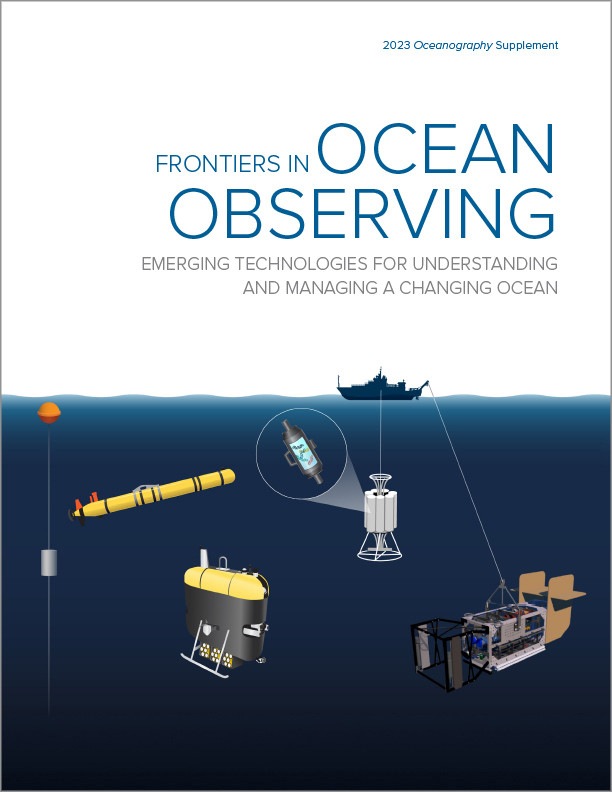Full Text
In this second supplement to Oceanography on frontiers in ocean observing, articles describe the many creative and promising ways in which scientists are now sampling and studying the ocean and its constituents, from carbon dioxide and oxygen, environmental DNA (eDNA), plastics, and microplastics, to coral reefs, fish, and whole ecosystems. These papers show, for example, how acoustic techniques are critical components for early warning of natural hazards such as earthquakes, tsunamis, and landslides and how they play significant roles in investigations such as determining how ocean soundscapes may be used to monitor coral reef ecosystem health. Several articles demonstrate the application of long-used technologies for new and important data-gathering purposes, while others describe how data collected by multiple technologies deployed simultaneously have improved monitoring of threats such as harmful algal blooms and oil spills. Some authors detail the application of eDNA analyses, especially to midwater environments, where they are providing new insights, in combination with other sampling and sensing methods. Modeling is a key aspect of several of the studies, where ocean observing data serve as critical inputs and for validation. These innovative observing technologies and analytical techniques are advancing our understanding of the world ocean and supporting its sustainable use and management.
Similar to last year’s supplement, we invited potential authors to submit letters of interest aligned with the priorities of the UN Decade of Ocean Science for Sustainable Development (2021–2030), though topics were further narrowed into specific themes. In addition, this year each topic had guest editors, some of whom are early career scientists. The idea was that this supplement would provide an opportunity for a senior scientist to mentor one from the next generation and for early career scientists to gain some experience as guest editors for a journal.
Ocean-Climate Nexus
THEME: Observations for Marine Carbon Dioxide Removal
GUEST EDITORS: Toste Tanhua and Jens Daniel Müller
How ocean observations and emerging technologies are helping to identify potential marine carbon dioxide removal (mCDR) opportunities and to measure the effectiveness of mCDR actions, including studies evaluating the potential adverse effects of human interventions on biodiversity and ecosystem function.
Ecosystems and Their Diversity
THEME: Patterns and Trends in Ocean Biodiversity Under Climate Change
GUEST EDITORS: Mark John Costello, Qianshuo Zhao, Charles Lavin, and Cesc Gordó-Vilaseca
Ocean observing efforts that record environmental and related biodiversity changes occurring in different ecosystems, from the coasts to the deep ocean and from the tropics to the high latitudes, and that address the link between observations and policy.
Ocean Pollutants
THEME: Assessing the Damage Caused by Marine Plastic Pollution
GUEST EDITORS: Luisa Galgani and Shiye Zhao
Both classical oceanographic approaches and new techniques for quantifying marine plastic pollution as well as its long-term consequences on ecosystems and climate through their interaction with natural elements of the marine environment.
Multi-Hazard Warning Systems
THEME: Ocean Observations for Coastal Hazard Warning
GUEST EDITORS: Benoît Pirenne and Soroush Kouhi
Observations and monitoring, forecasting, alerting, and hazard research together with the systems developed around them and their applications in coastal communities.
Technology
THEME: Environmental DNA Technology
GUEST EDITORS: Annette Govindarajan and Luke McCartin
Recent developments in all aspects of eDNA technology and interpretive approaches relevant for observing and studying animal biodiversity, especially in the ocean midwater environment.
We thank Ocean Networks Canada, the US National Oceanic and Atmospheric Administration’s Global Ocean Monitoring and Observing Program, and the Partnership for Observation of the Global Ocean for generously supporting publication of this supplement to Oceanography.

